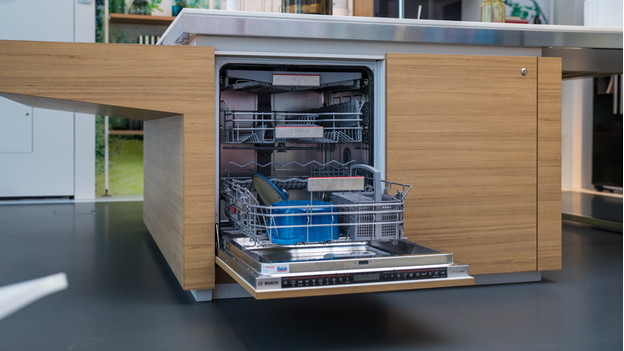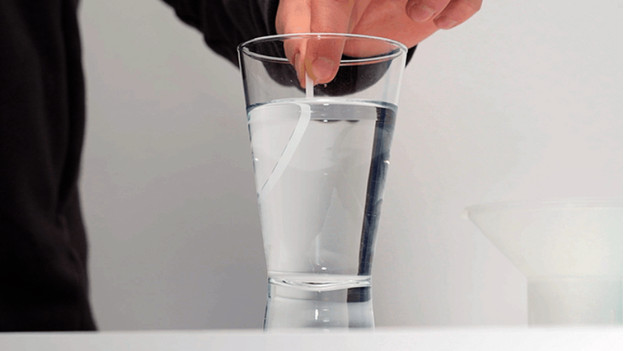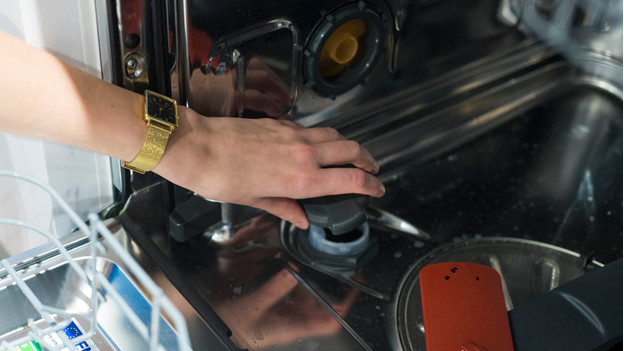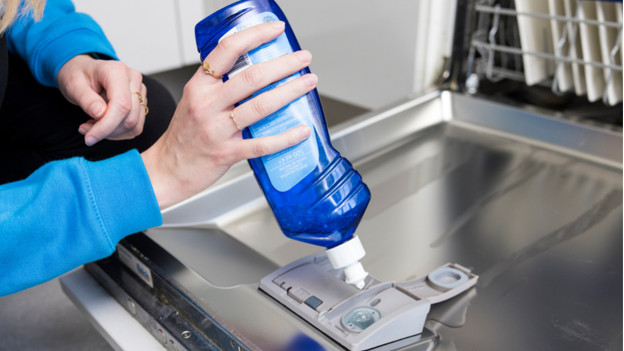
Get started with your dishwasher
Get started with your dishwasher

Go through the following steps with your new dishwasher.
- Step 1. Set the water hardness
- Step 2. Fill the salt
- Step 3. Fill the rinse aid
- Step 4. Run a cycle without dishes
Step 1: set the water hardness

Water contains limescale. This causes glass corrosion and limescale on your dishes. You can prevent this by adjusting the water hardness of your dishwasher. You can use special test strips to figure out the water hardness of your region. You can buy these online. You can also find the water hardness on the website of your water company. Check the manual to find the settings for water hardness and how you can set them in your dishwasher.
Step 2: fill the salt

Salt, also called regeneration salt, softens and descales water. Unscrew the lid of the salt reservoir and fill it with water. Pour in the salt with the help of a funnel. Is the water coming out? The reservoir is too full. Screw the lid back onto the reservoir tightly.
Step 3: fill the rinse aid

Rinse aid keeps your cutlery free from stains and your crystal glasses clear. Open the cover of the rinse aid reservoir and fill this reservoir up to the mark. Make sure to close this cover again properly. Did you spill rinse aid? Remove this with a cloth. That way, you'll prevent too much foam with the next dishwasher cycle.
Step 4: run a cycle without dishes

Did you go through all the steps above? You can start a dishwasher cycle while keeping it empty. That way, you'll remove possible rests from the factory and rinse everything thoroughly. You can use a short or hot cycle for this. Your dishwasher is now ready for use.


